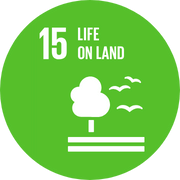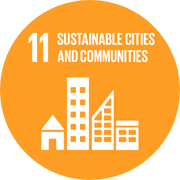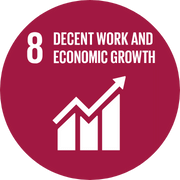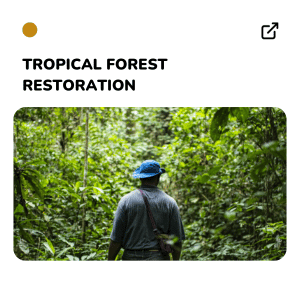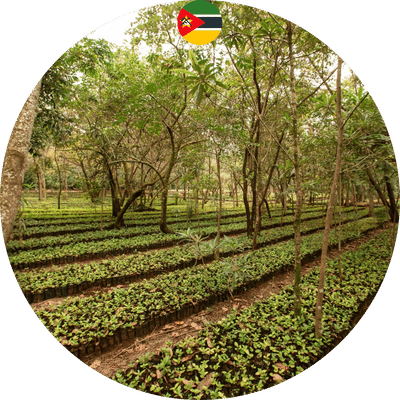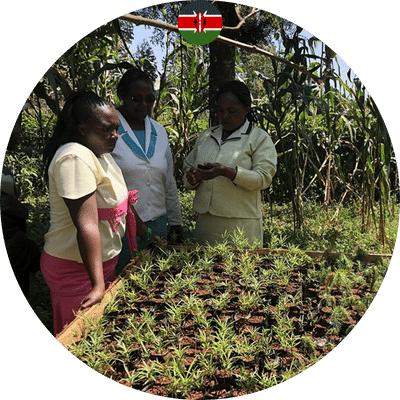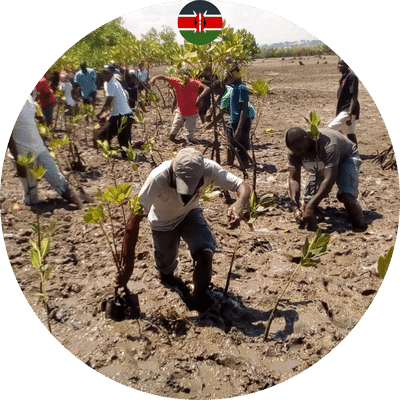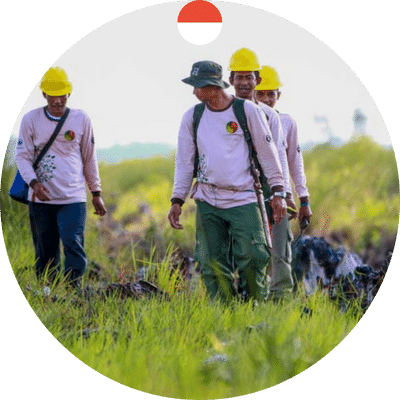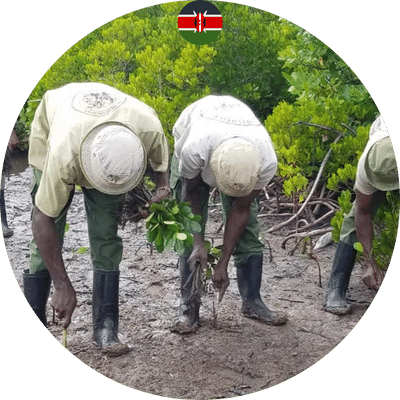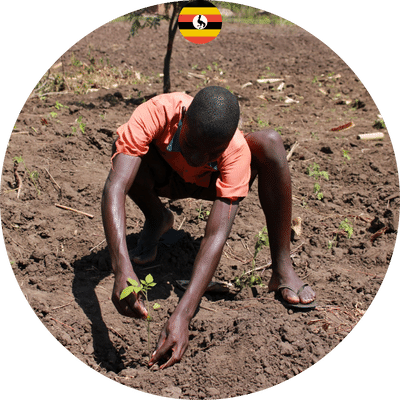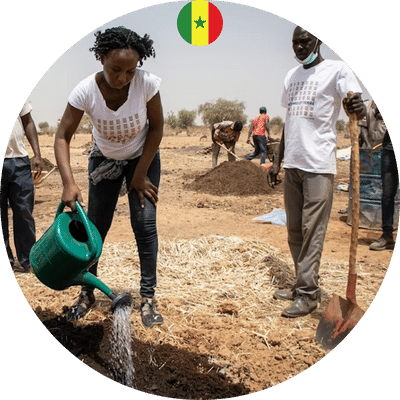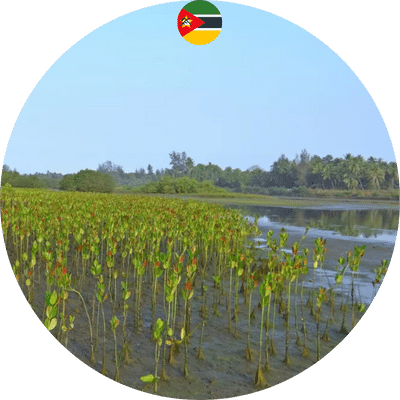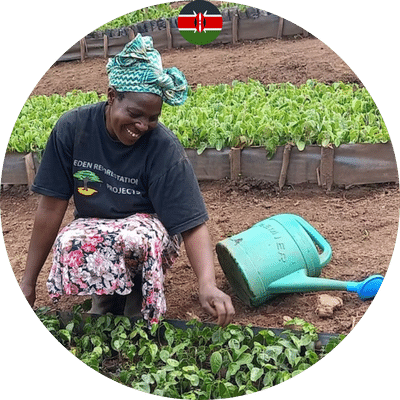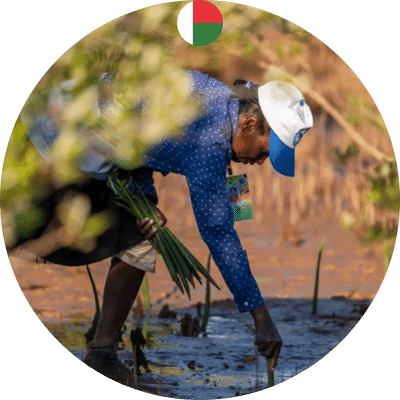Chimanimani Landscape Restoration
Table of contents
Project location
Chimanimani, a hidden gem in the Eastern Highlands of Zimbabwe and Mozambique, presents a striking contrast of breathtaking beauty and challenging economic circumstances. The Chimanimani Mountains, a key highlight, offer a pristine natural environment that has captivated the hearts of many with its scenic vistas and unique flora and fauna.
Despite its natural wealth, Chimanimani faces significant economic challenges. The local economy, primarily reliant on agriculture, mining, and tourism, needs more infrastructure and investment. Agriculture, the backbone of many households, is often at the mercy of the region’s climate variability. The area’s farmers grapple with issues such as erratic rainfall patterns and the impact of climate change, which threaten their livelihoods and food security.
The climate in Chimanimani is characterized by its wet and dry seasons, with the former bringing much-needed rainfall to its fertile valleys. However, the region is also prone to extreme weather events, such as cyclones and droughts, which devastate the natural environment and the people who call Chimanimani home.
Despite these challenges, the spirit of the Chimanimani community remains resilient. Efforts to preserve the region’s natural beauty while promoting sustainable economic development are underway, aiming to harness the potential of tourism and protect its environmental heritage for future generations.
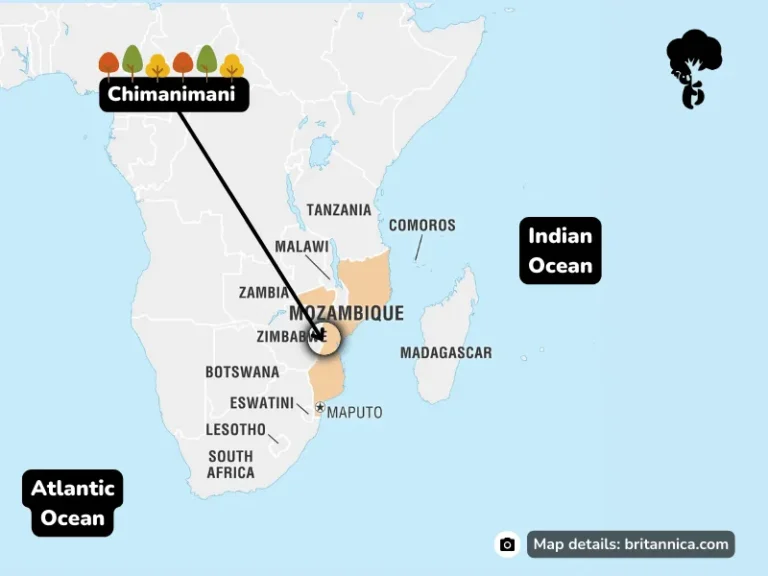
Planting partner
Eden Reforestation Projects is a non-profit organization founded in 2005 with the mission to rebuild natural landscapes destroyed by deforestation. They work in developing countries by partnering with local communities to plant trees, provide jobs, and create long-term solutions to poverty and environmental degradation.

Eden Reforestation Projects’ “Employ to Plant” method is central to their success in restoring landscapes and empowering communities.
Read more about Employ to Plant
Core principles:
- Local employment: They directly employ community members to plant trees, providing fair wages and improving local livelihoods.
- Skills development: Workers receive training in tree planting, nursery management, and other relevant skills, empowering them for future opportunities.
- Community ownership: Communities play a central role in project planning, implementation, and monitoring, fostering long-term sustainability.
Benefits:
- Poverty reduction: Provides stable income and improves economic prospects for individuals and families.
- Reduced deforestation: Creates alternative income sources, lessening reliance on practices like charcoal production that harm forests.
- Increased community engagement: Empowers communities to take ownership of their environment and participate in its restoration.
- Improved social well-being: Contributes to better health, education, and overall quality of life in communities.
How it works:
- Partnerships: Eden builds strong relationships with local leaders and organizations to understand community needs and tailor their approach.
- Recruitment: They recruit and train local people to become planting teams, ensuring fair labor practices and equal opportunities.
- Tree planting: Workers plant native tree species following best practices to maximize survival and growth.
- Nurseries: Community-managed nurseries grow the seedlings used for planting, offering additional employment and promoting local ownership.
- Monitoring and evaluation: The project tracks progress, measures impact, and adapts based on data and community feedback.
Examples:
- In Nepal, Employ to Plant helped reduce poverty by 50% in some communities.
- In Madagascar, over 15,000 people have been employed through the program.
- In Haiti, communities are actively protecting and managing restored forests.
The Project
The Chimanimani Landscape Restoration Project is a holistic initiative aimed at restoring and protecting the critical ecosystem services and biodiversity of the Chimanimani Mountains in Mozambique. The project aims to actively revive and safeguard the vital ecosystem services that this region provides. With a commitment to biodiversity, the focus is on protecting the diverse flora, including 78 endemic plant species and three-quarters of Mozambique’s Afromontane Forest cover. The approach goes beyond just environmental conservation; the project strives to ensure the lasting well-being of both communities and the planet by fostering sustainable relationships between people and the landscape.
The impactful activities include reforestation efforts, where native trees are planted in degraded areas to restore forest cover and enhance biodiversity. Through agroforestry, trees are integrated into agricultural systems, providing food, income, and environmental benefits. Biodiversity conservation remains a core element, aiming to safeguard existing wildlife and their habitats. Fire mitigation initiatives reduce the risk of wildfires, protecting both forests and communities. Invasive species control is another vital component, as the project works to remove invasive plants threatening native species. Additionally, sustainable livelihood programs empower communities with alternative income sources, reducing their reliance on unsustainable practices like deforestation.
The results are tangible and impactful. The project has already positively influenced 3,130 families, elevating their household income and contributing to valuable scientific data. Over 45,000 hectares of forest have been brought under community-managed conservation zones, emphasizing the significance of local involvement. Notably, the project has successfully converted over 500 families from slash-and-burn agriculture to sustainable practices, fostering a positive shift towards a more harmonious coexistence between people and the environment.

Photos 📷

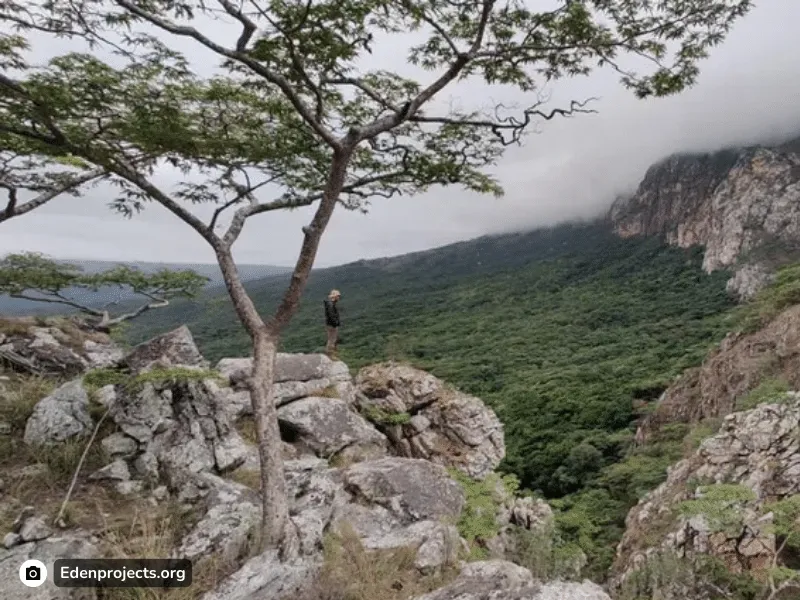
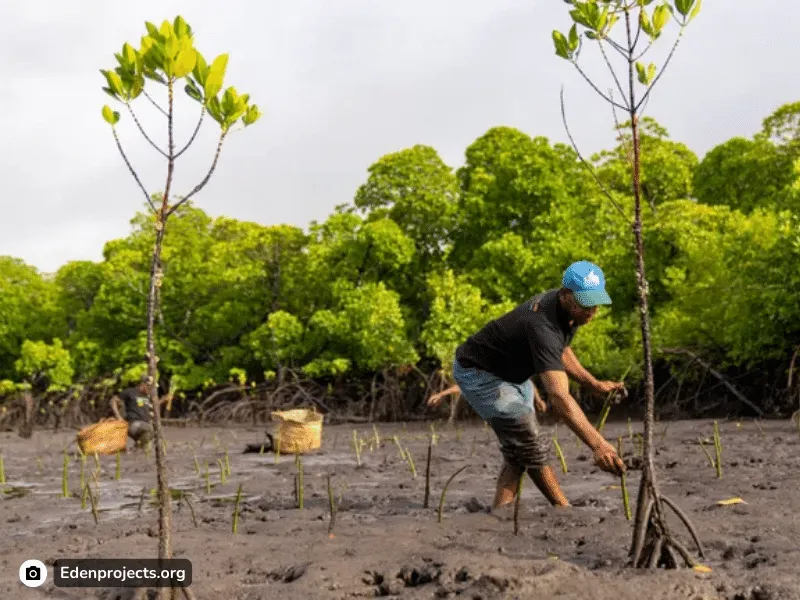

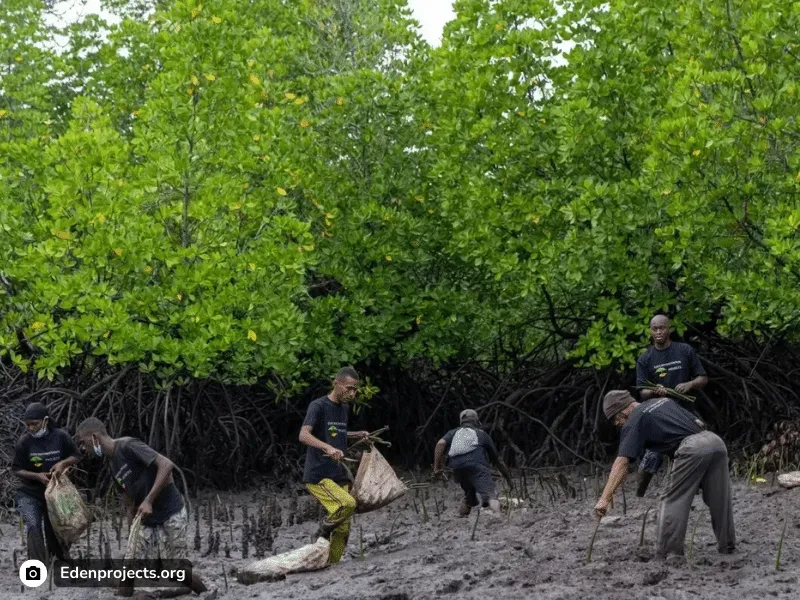
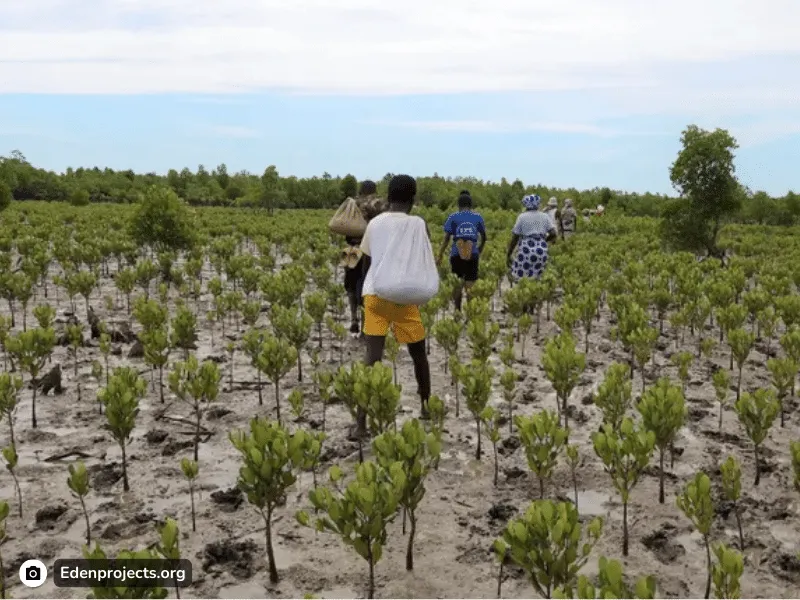

Project SDGs
When allocating our members’ funds, we’re committed to aiding in the Sustainable Development Goals set by the United Nations. Below are the SDGs acknowledged for this project.
Methodology
Project Drawdown’s Tropical Forest Restoration solution focuses on reviving and safeguarding tropical forests. This involves restoring degraded lands within the tropics, aiming for large-scale implementation to maximize its impact on climate change mitigation.
Key Points:
- Massive Sequestration Potential: Restored forests act as carbon sinks, capturing and storing significant amounts of atmospheric CO2.
- Natural Regeneration: The preferred approach is letting degraded lands naturally regrow, aided by protection from harmful factors like fire and grazing. This method is cost-effective and fosters biodiversity.
- Active Planting: In some cases, cultivating and planting native seedlings along with invasive species removal can accelerate the process.
- Numerous Co-benefits: Beyond carbon sequestration, restoration brings positive impacts like biodiversity conservation, improved water quality, healthier soil, and support for local communities.
- High Priority: Project Drawdown considers this solution extremely important due to its potential and co-benefits.
Additional Information:
- The international community aims to restore 350 million hectares of degraded forest land by 2030.
- Estimates suggest a potential carbon sequestration of 1.7-2.9 gigatons by 2030.
- Legal protection of restored forests is crucial for long-term success.
Project Updates
You can follow this project on Restor for project updates and progress via satellite imagery.
ICUN Red List
The state of the world’s biodiversity can be determined in large part by looking at the IUCN Red List. It is a powerful instrument to inform and spark action for biodiversity conservation and policy change, which is essential to safeguarding the natural resources we depend on for survival. It is much more than a list of species and their condition.
Chimanimani National Park and its Buffer Zone in Mozambique host a variety of plant and animal species, some of which unfortunately find themselves on the IUCN Red List. Notable plant species facing conservation challenges include the Chimanimani cycad (Encephalartos chimanimaniensis) and the cabbage tree (Cussonia spicata).
On the animal front, the golden mole (Amblysomus julianae) and the Chimanimani stream frog (Strongylopus jappi) are among the remarkable species grappling with threats. Conservation efforts in this breathtaking region aim to preserve these vital components of biodiversity, highlighting the importance of habitat restauration in supporting the delicate balance of ecosystems.




